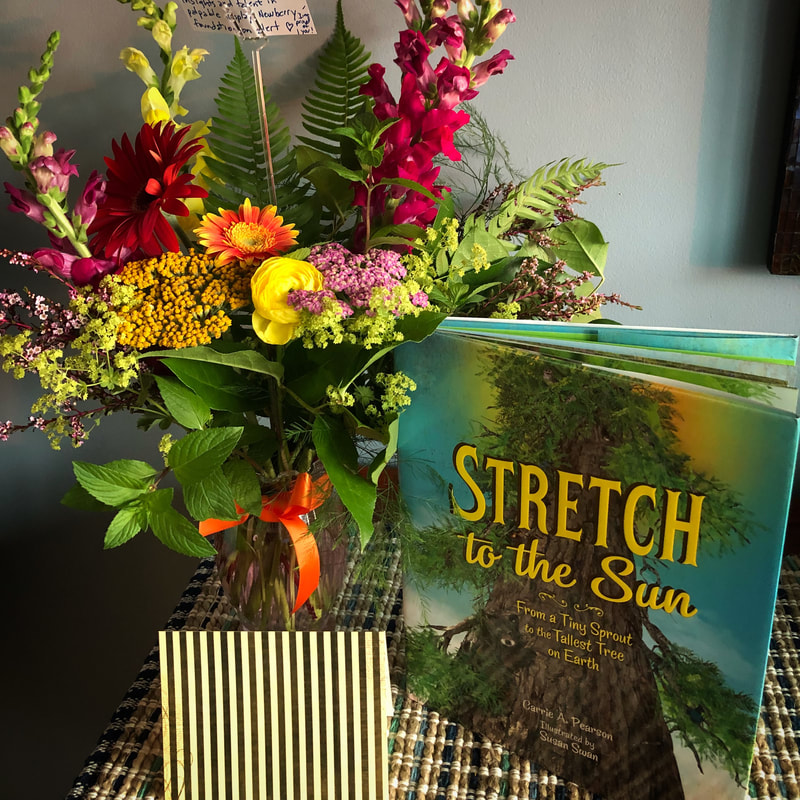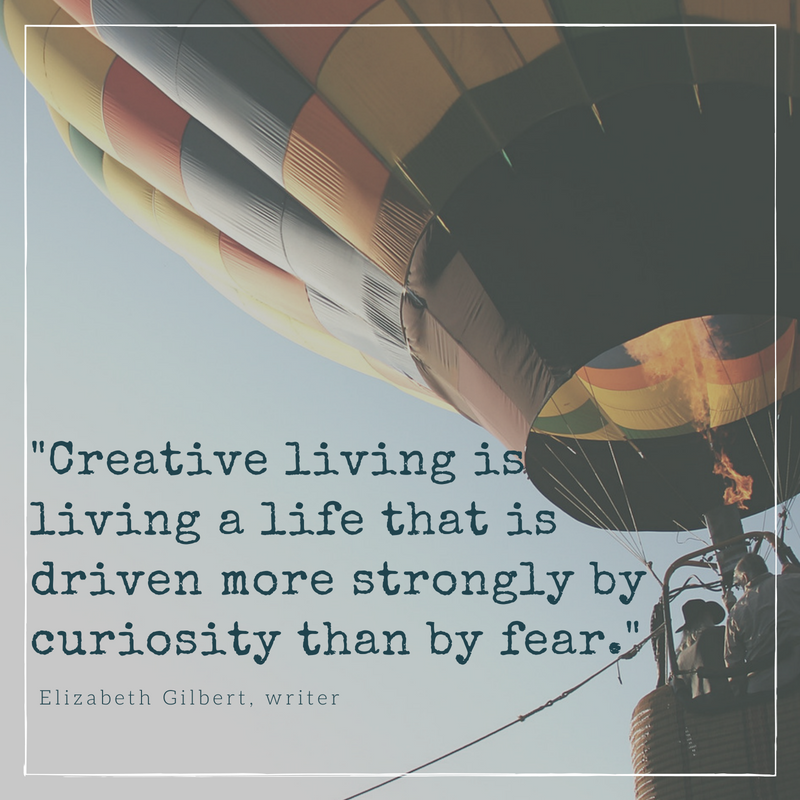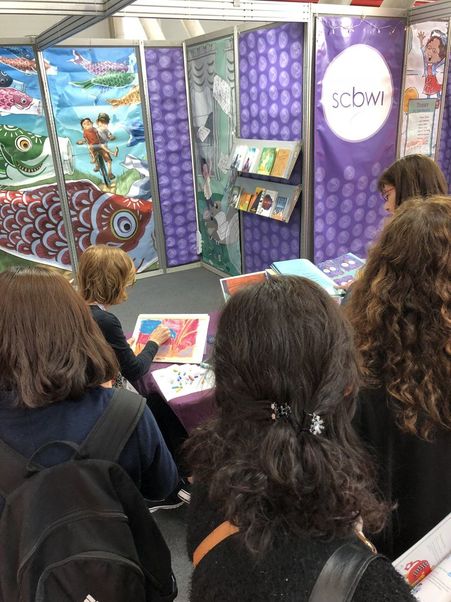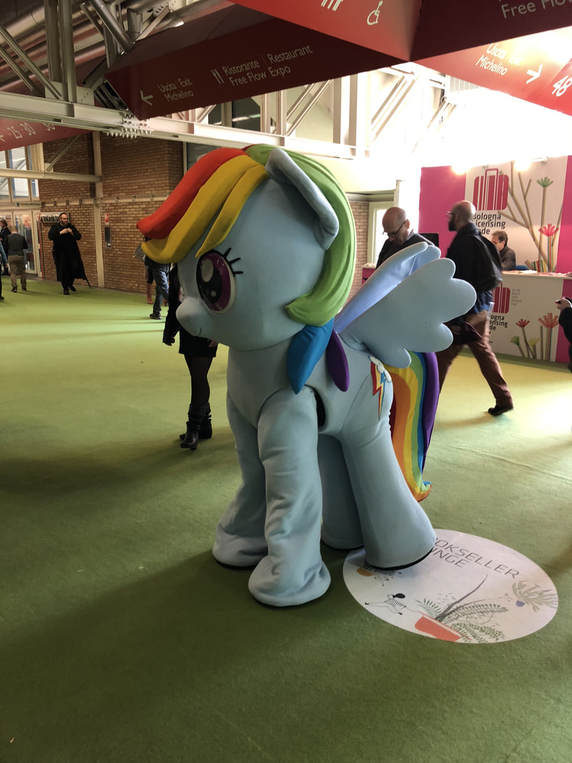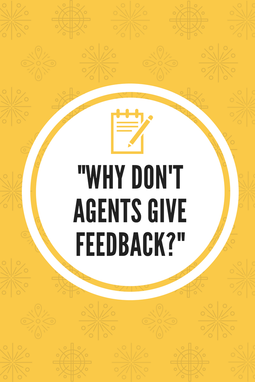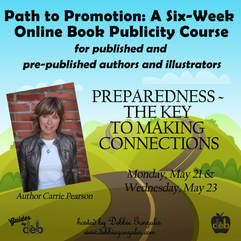
I’d seen pictures of the Bologna Children’s Book Fair and I expected it to be big. I expected a lot of people making foreign rights deals and of course, a lot of children’s books. But I never expected so much intensity around and respect for the art of creating books for children.
Every time I pushed the turnstile into the venue — called BolognaFiere — it was as if I’d left a typical world full of typical happenings and landed in a special place that was created only for and about children’s books. Every person there (approx 27,000+ of us) came because they wanted to know more, do bookmaking better, and/or explore what was possible.

So what does it look like inside the Fair? Several very long and light filled-halls are chock-full of booths — or “stands” as they are called there — showcasing books and child-related products from all around the world. Ever wonder what the country Slovakia is publishing? Head to stand 22 C 4. Or want to see what the Scandinavian Publishing House views as its best new titles? That’s stand 26 A 68. Or maybe compare the illustration styles of the Cambridge School of Art (stand 25 B 110) with Changjiang Children’s Press (26 B 127)?
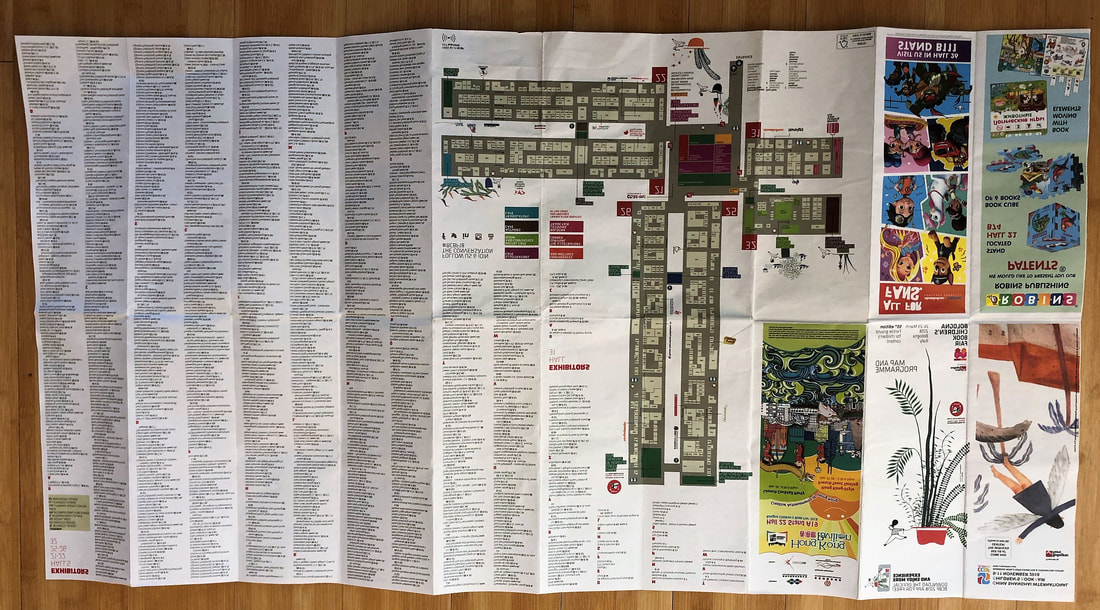
Here is a list of all the exhibitors and a map of the venue. Wow, right?

Then there are “conferences” – short presentations/workshops/masterclasses on many, many topics such as illustration, packaging, apps, translation, toy design, etc. etc. This year, there were 250 different conferences, many presented in Italian, Japanese, Chinese, and English. At one conference, I heard a translator who looked as Midwestern USA as person could but spoke with a beautiful command of Japanese. Really, one could keep busy just attending conferences. Here is a view from my… um…refueling station.
The Society of Children’s Book Writers and Illustrator’s booth (stand 26 B 76) was a happening place and home base for book creators from around the world. Highlights were the Dueling Illustrator’s competition (in which two illustrators are read part of an unpublished manuscript and asked to draw an image for it on the spot, in front of an audience, in a short amount of time!) and showcases where SCBWI members shared their books and often, their art-making for visitors.
Here is a Dueling Illustrator’s competition with intrepid SCBWI Advisory Board Member, Bologna Book Fair coordinator for SCBWI and author, Chris Cheng, reading the manuscript selection to two illustrators:

Here is SCBWI Michigan co-Regional Advisor and author/illustrator, Leslie Helakoski, during her busy showcase.

Also, the Fair celebrates the “best of” -– such as the best illustrations submitted for selection (displayed in the photo to the left) and gives out prestigious awards (Bolognarazgazzi Digital Award, New York Times Best Illustrated Children’s Books Award, Silent Books Award, BOP – Bologna Prize for the Best Children’s Publishers of the Year, etc.).
And just to keep things interesting, the Licensing Trade Fair happened simultaneously so we were treated to various life-sized licensed toys in our midst.
Fascinating books are being made and sold in almost every corner of the Earth. If we believe, and I do, that children’s books often represent our current culture and our hopes for tomorrow, the Bologna Children’s Book Fair is an opportunity to see our whole wide world under one roof.
What does all this mean for a creator? For your own work? Scroll down for Part Duo.




